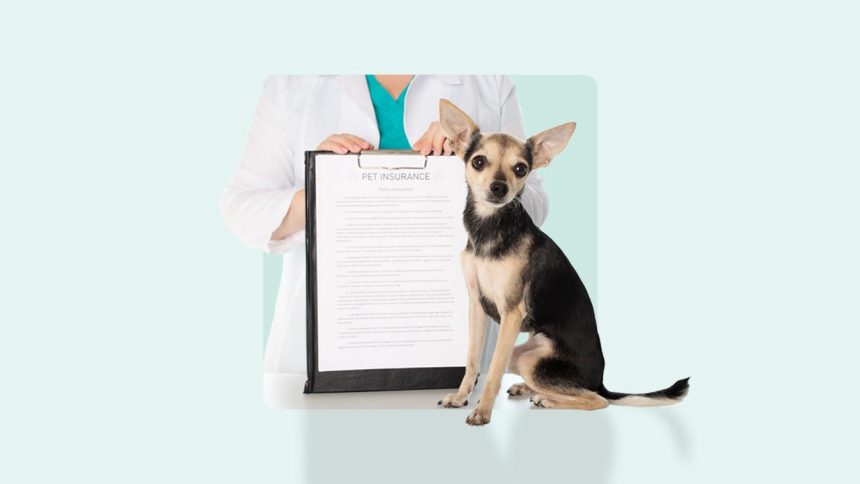Key takeaways
- Pet insurance premiums are the monthly or yearly fees you pay to maintain insurance coverage for your furry friends.
- Pet insurance premiums for an accident and illness policy generally range from around $32 to $56 per month.
- Several factors determine premium costs, including your pet’s health, location and the level of coverage you want or need.
- There are ways to reduce premiums, such as choosing a higher deductible, opting for accident-only coverage and taking advantage of discounts.
In April 2024, the North American Pet Health Insurance Association (NAPHIA) released a State of the Industry (SOI) Report that reflected the amount pet owners were paying in pet insurance premiums at the end of 2023. The average monthly premiums ranged from $9.69 for cats and $17.07 for dogs. Accident and illness pet insurance policies set pet owners back a monthly average premium of $31.94 for cats and $56.30 for dogs.
These numbers represent averages, and determining exactly how much pet insurance costs in each case depends on many factors. When considering pet insurance, it’s critical to understand the various aspects that will shape how your premiums are determined.
How pet insurance premiums work
Pet insurance premiums are a key element of how pet insurance works.
Pet insurance premiums are the monthly or annual payments you make to keep your policy active. These premiums cover a portion of your pet’s veterinary expenses, depending on the type of policy you choose.
There are generally three types of pet insurance policies:
- Accident-only: These policies cover injuries resulting from accidents, such as broken bones or swallowed objects. An accident-only insurance policy for pets doesn’t cover any illnesses and is typically the most affordable option. It’s ideal for young, healthy pets less likely to develop health issues early on. Accident coverage also works well for pets with pre-existing conditions that won’t be covered by an accident and illness pet insurance plan.
- Accident and illness: An accident and illness plan provides more comprehensive coverage. It covers accidental conditions, as well as unexpected or new illnesses. If you’re considering this type of plan, be aware that what’s covered by these comprehensive plans may vary from one provider to the next.
- Wellness and preventive care plans: Optional wellness or preventive care add-ons and riders help cover the costs of routine care. They can help offset the costs of treatments such as vaccinations, dental cleanings, flea prevention and, microchipping and spaying or neutering.
10 factors that affect pet insurance premium costs
Insurance providers must know several details about your pet before giving you an estimate. Here are some factors that may come into play when calculating coverage and premiums.
1. Your pet’s breed
Your pet’s breed plays a significant role in determining your pet insurance premium. Certain breeds are predisposed to specific health issues, which can increase the likelihood of needing veterinary care.
For instance, larger dog breeds like Bernese mountain dogs and Great Danes are more susceptible to hip dysplasia, while smaller brachycephalic breeds like bulldogs and pugs are prone to respiratory issues.
2. Your pet’s gender
You may pay more in pet insurance premiums for a male pet than a female. Insurers often take into account a male pet’s propensity to get into fights and accidents due to their potentially dominant behavior.
3. Whether your pet is spayed or neutered
Neutered dogs and cats are less likely to display dominant behavior than ones who are intact. Therefore, premiums for a neutered dog may be lower.
A spayed pet, especially in the case of dogs, has a significantly lower likelihood of developing certain health medical conditions such as specific cancers. Some pet insurance providers will take this into account when determining your pet’s insurance premiums.
4. Your pet’s age
As pets age, they are more likely to develop health problems, so many insurance providers raise rates for older animals. Puppies and kittens typically have lower premiums since they are less likely to have pre-existing conditions. As pets reach middle age, the cost of insurance can rise significantly. Senior dogs and cats, especially those with a history of health issues, will likely face higher premiums in their golden years.
Many insurers also impose age limits, restricting new policies for older pets. Enrolling your pet in an insurance plan while they’re still young may be in your best interest. If you want to insure an older dog or cat, you may be limited to an accident-only plan and optional wellness plans and riders.
5. Your pet’s health condition and medical history
If your pet has a pre-existing condition or chronic health issue, you may encounter higher premiums or coverage exclusions. While most pet insurance policies do not cover pre-existing conditions, some providers may offer limited coverage for conditions that are curable or have been symptom-free for a specific period.
Some insurers require you to submit your pet’s medical history before determining your premiums.
6. Your location
Your geographical location significantly impacts pet insurance premiums due to the varying cost of veterinary care across different regions. Different pet insurance companies may also have location restrictions and be unavailable in your region, giving you fewer options for saving on your premium costs.
7. Level of coverage
The amount and type of coverage you choose directly impact your premiums. Comprehensive plans with accident, illness and wellness coverage or optional riders cost more than basic accident-only policies.
8. Deductibles, reimbursement rates and coverage limits
A deductible is paid out of pocket before your insurance kicks in. The reimbursement level is the percentage of the vet bill your insurance covers after you’ve met the deductible. Policy limits, meanwhile, are the maximum amount your provider will pay out for claims, depending on the conditions of your specific insurance plan.
Many insurance providers let you customize your pet’s insurance plan and choose your, maximum payouts, deductibles and reimbursement rates, all of which play a role in how much you’ll pay in monthly or annual premiums.
9. Discounts and incentives
Some pet insurance providers offer military or employer savings or discounts for enrolling multiple pets. Some also offer disappearing or diminishing deductibles for pets whose owners haven’t filed claims exceeding certain amounts.
10. Insurer’s underwriting criteria
Each insurance company has criteria for underwriting policies. Some companies might offer lower rates for specific breeds or ages, while others might have more expensive policies for the same factors. Shopping around and reading the fine print can help you find the best rate for your wallet and your pet’s needs.
Tip
When shopping for a policy, try the free quote generators most insurers provide on their websites. They’re a fast and efficient way to see what factors may determine your pet insurance premiums.
How to reduce your pet insurance premiums
Owning a pet is expensive, whether or not you have insurance. Luckily, there are ways to reduce your pet insurance premiums.
- Choose a higher deductible: A higher deductible can significantly lower your monthly premium. Be sure you have the cash flow to pay the out-of-pocket costs if your pet needs care. For example, if you have a healthy pet and can comfortably pay a $500 deductible, this option could save you money in the long run compared to a lower deductible with higher premiums. You might also be able to avoid out-of-pocket expenses if your insurer (and your vet) offer direct vet pay.
- Consider a lower reimbursement percentage: Choosing a lower reimbursement level can reduce your premium. This option works well for pet owners who are comfortable covering a larger portion of the vet bill themselves.
- Opt for accident-only coverage: If your pet is young and healthy, accident-only coverage might be a cost-effective option. This is particularly useful for pets less prone to genetic or breed-specific health issues but still facing risks such as injuries from play or outdoor activities.
- Review your coverage regularly: As your pet ages, its health needs may change. Regularly reviewing and adjusting your coverage can help ensure you’re not overpaying for unnecessary coverage or can add coverage for new needs. For example, if your pet no longer needs certain routine treatments, you might consider dropping a wellness plan to save on premiums.
- Shop around: Pet insurance premiums vary widely among providers for the same coverage. It’s a good idea to compare quotes from the top pet insurance companies to find the best deal. Some insurers even offer price-match guarantees or will lower your rate if you find a comparable plan for less.
- Take advantage of discounts and incentives: Many insurers offer discounts for various reasons, such as enrolling multiple pets, paying annually instead of monthly or having your pet microchipped. Ask your insurer about discounts and incentives when shopping for a policy. Some companies even offer employee discounts, so it’s worth checking with your employer.
Next steps
With a clear understanding of pet insurance premiums and how to manage costs, your next step is to assess your pet’s needs and your budget.
Start by comparing quotes from multiple insurers, focusing on deductibles, coverage levels and any discounts available. Regularly review your policy as your pet ages to ensure it continues to meet your pet’s needs, and adjust as necessary to maintain comprehensive and affordable coverage.
Frequently asked questions
Read the full article here
















